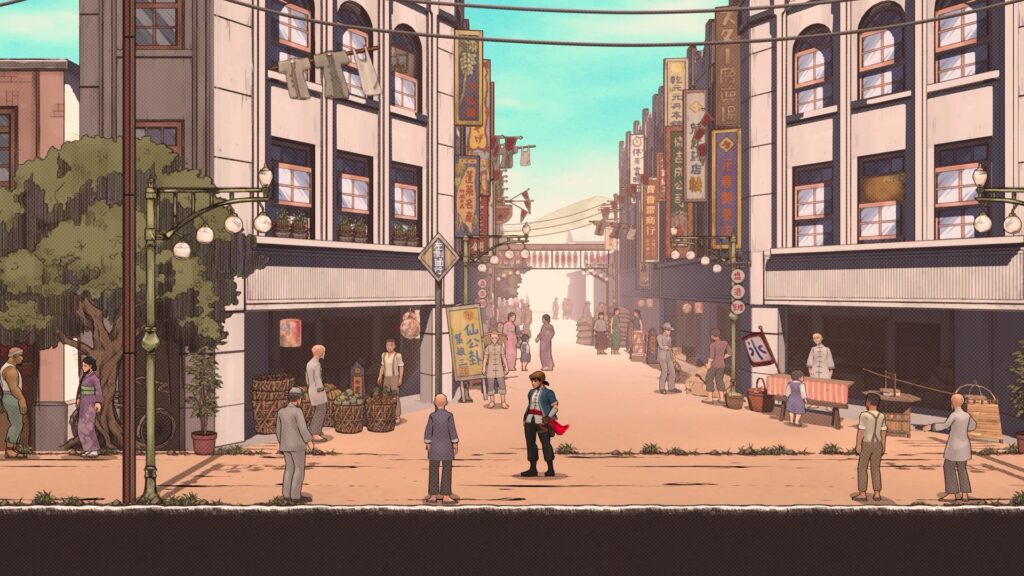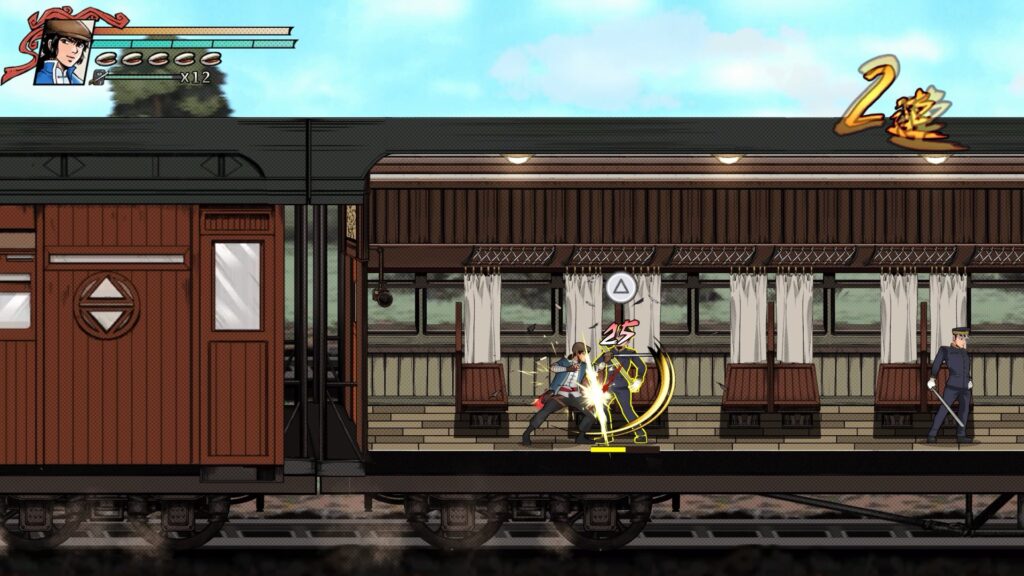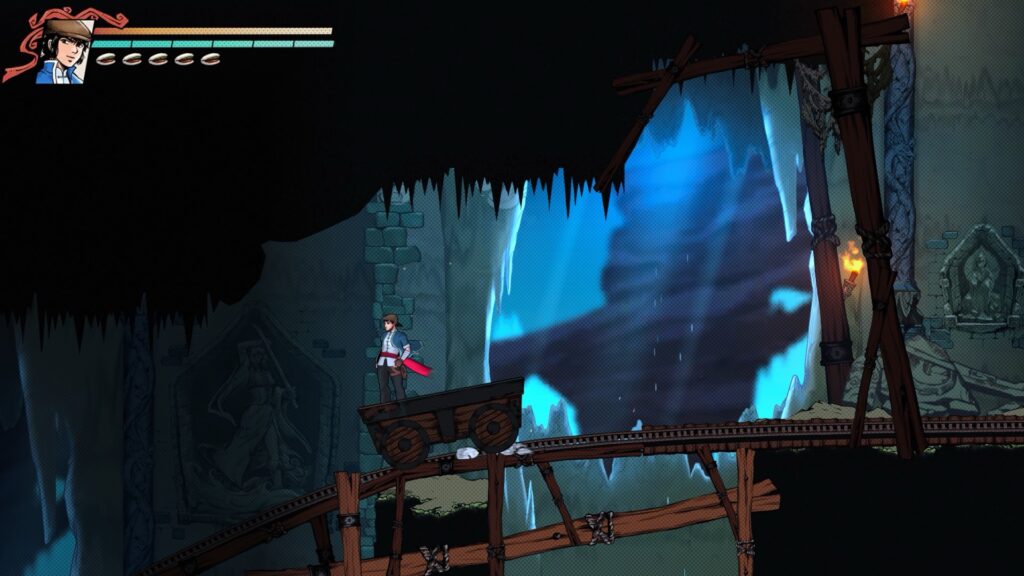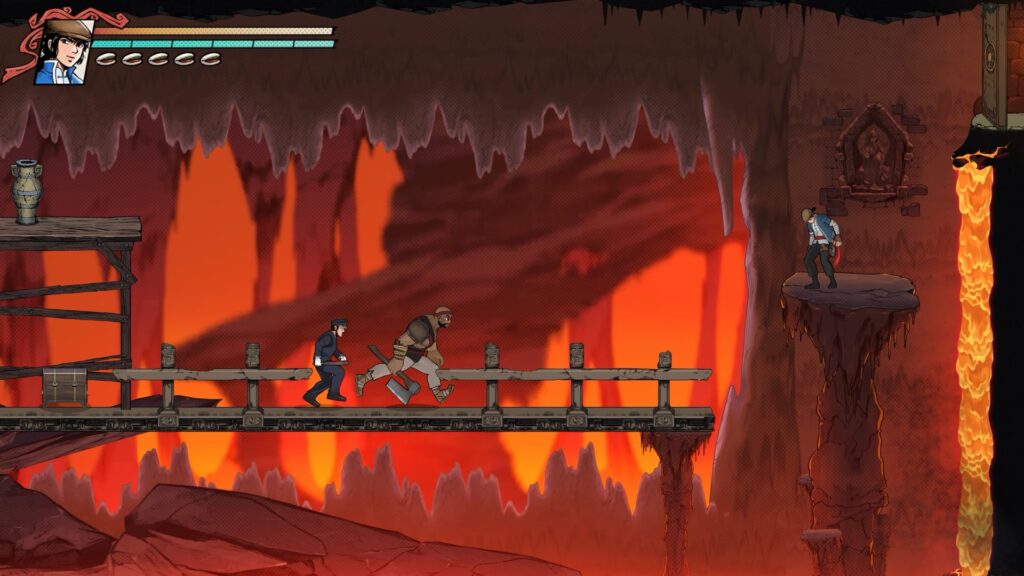- Genre: Beat-em-up
- Platform: PS5
- Also Available On: PS4, Xbox One, Xbox Series, Switch, Windows, iOS
Sometimes my backlog randomizer just really hits the mark, and this is one of those cases. I’d recently played Double Dragon: Neon and was left disappointed by how slow basic movement felt to me so I had set it aside. My randomizer followed it up immediately by this one and it was like night and day. Fast movement, solid platforming, a good power curve, variety in combat styles – this one feels like a modern take on the genre that really just worked well.

The thing that will pull your attention first is the overall presentation of the game, and it’s pretty solid in that regard. The in-game visual style is incredibly solid with a lot of obvious inspiration from comics. That extends to the way the story starts being presented with small vignettes cutting through actual comic book panel layouts. However, when gameplay starts it becomes obvious that the quality is more than just flashy visuals.
At its core, this is a very melee-focused beat-em-up. The player’s main weapon a dagger that works fine on its own. Other melee-focused defensive maneuvers include the ability to dodge as well as the ability to deflect projectiles back at the firing target. However, the red sash is the real fun item here. This isn’t necessarily a weapon on its own (though it’s used for traversal mechanics like a hookshot). What it does is allow you to wrap a weakened enemy and steal their weapon. This is where combat in the game really opens up wildly.

Any combat situation is an opportunity to change how you’re playing. Big enemies coming around that cause a bunch of damage? There’s likely a large weapon available to steal that will stun them quickly. Bunch of environmental dangers that make movement risky? There’s probably an enemy carrying a gun or molotovs that you can throw instead of moving. The combat scenarios overall felt like they were crafted with far more care than is typical of the beat-em-up genre simply due to the wide array of weapon mechanics available through stealing.
The way this was pulled into bosses was also pretty clever. Boss weapons can’t inherently be stolen. However, at certain health transition points the bosses get stunned and then can be stolen. This gives the player something fun to beat the boss up with during the stun phase if they want. However, the more important thing is that because the player stole that weapon, the bosses have to change their mechanics turning those periods into phase transitions. The actual mechanic of phase transitions and attacks changing isn’t new, but implementing it via the typical weapon steal mechanic is a clever way to both reinforce the mechanic for the players as well as tie it hard to the mechanics of the game.

The rest of the game is a pretty standard sort of platformer, though it is well tied together. The player routinely earns upgrades to enhance their traversal ability (ex: double jumps, air dashes, etc). The sash itself can be used like something akin to a hook shot. There’s hidden and puzzle areas with upgrades to be found all over the place. Basically, the game keeps you busy between combat segments in a way that really prevents boredom and enhances the platformer part of the game that isn’t typically that present in beat em ups.
The upgrades themselves are probably also worth mentioning. They’re all relatively small upgrades, but they are present all over the place and have a wide array of effects. Some are increases to weapon durability (ex: +1 swings of a stolen axe). Some are upgrades to core capabilities (ex: +10% dagger damage). However, the effect of this is that it really smooths out power increases so that the player always feels like they are improving. Rather than being large steps and plateaus when gaining upgrades, the player is always just getting a bit more inherently strong. It really works as an effective way to make it feel like some progress is always occurring.

This was a pleasant surprise. I’d picked it up a little bit ago when I saw the disc version on sale and just hadn’t gotten around to it for a while. I’ve been in a bit of a run of just letting my backlog randomizer choose and it sure hit here. Games like this that have a tight mix of platforming and combat where both sides are solid are just so rare to find, and this really hits both. The combat is incredibly varied despite its surface simplicity, so it doesn’t get old through the 6-8 hours of play time. The platforming is incredibly fluid and makes good use of an expanding set of capabilities as you get to new levels. Overall this just hit all the marks I’m looking for in this type of game.
